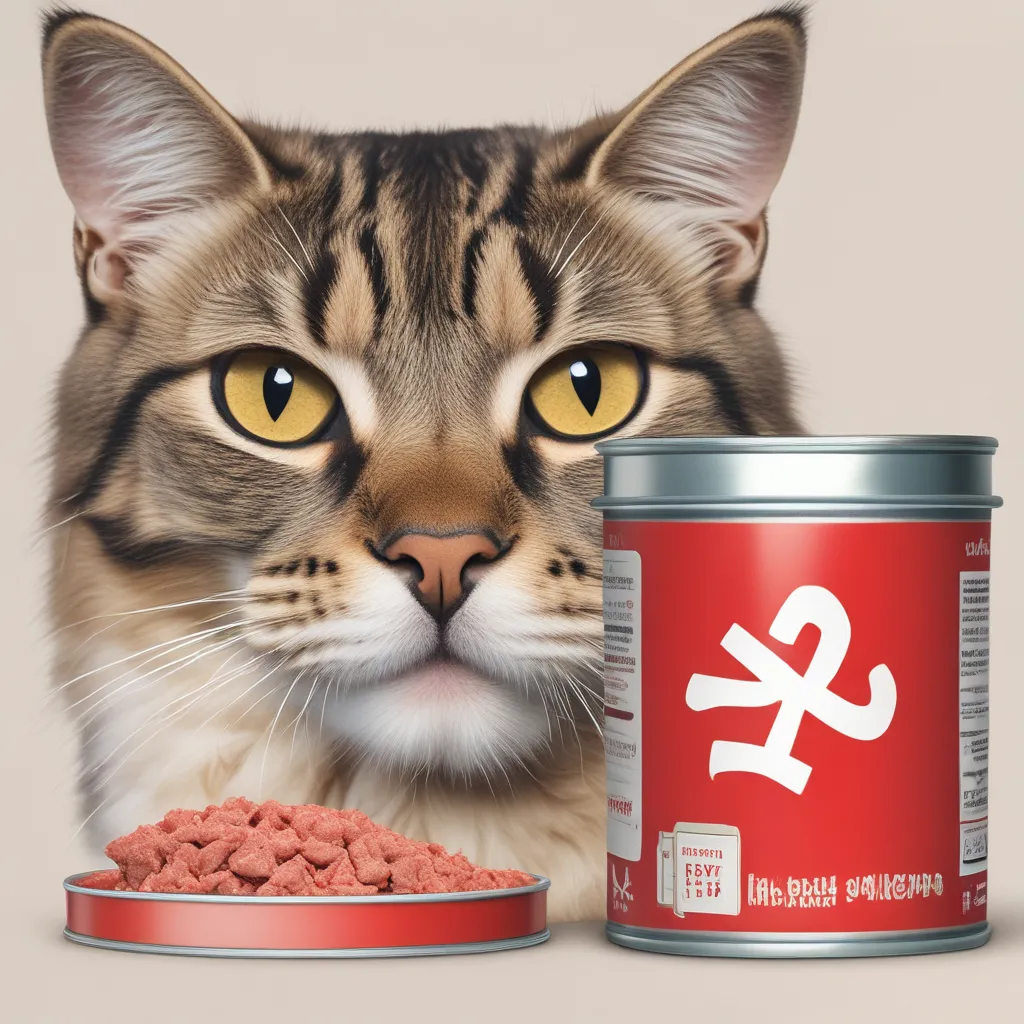Introduction
Is Tuna good for a cat? This is a question that many cat owners have asked themselves when considering their pet’s diet. As a responsible and caring cat owner, it’s natural to want to provide your feline friend with the best possible nutrition. Tuna, being a popular ingredient in many cat foods, has sparked a debate about its nutritional value and potential risks for cats.
While tuna can be a nutritious addition to a cat’s diet, it’s essential to understand the pros and cons of feeding tuna to your cat. In this article, we will delve into the world of tuna and explore its nutritional benefits and risks, as well as provide guidance on how to safely feed tuna to your cat and ensure a balanced diet.
Is Tuna a Nutritionally Balanced Food for Cats?
Tuna can be a nutritious and healthy addition to a cat’s diet, but it is not a nutritionally balanced food for cats on its own. While tuna is high in protein and low in carbohydrates, it lacks certain essential vitamins, minerals, and amino acids that cats require to function normally.
Cats require a balanced diet that includes a variety of nutrients, including protein, fat, carbohydrates, vitamins, and minerals. Tuna is deficient in some of these nutrients, making it an incomplete food source for cats. For example, tuna is low in vitamin E, which is essential for maintaining healthy skin and coat, as well as supporting immune function.
However, tuna can be a healthy treat for cats in moderation. Many commercial cat foods contain tuna as an ingredient, and it can provide essential omega-3 fatty acids, such as EPA and DHA, which support skin and coat health and may help reduce inflammation.
To feed tuna to your cat safely, it’s essential to follow some guidelines:
- Only offer plain, unseasoned, cooked human-grade tuna.
- Limit the amount to no more than 1 tablespoon per week.
- Choose tuna that is low in mercury, such as skipjack or albacore.
- Avoid feeding tuna to your cat as a primary source of nutrition.
In summary, while tuna is not a nutritionally balanced food for cats, it can be a healthy treat in moderation. Always prioritize a balanced and complete commercial cat food as the main staple of your cat’s diet.

What are the Nutritional Benefits and Risks of Tuna for Cats?
Tuna can be a nutritious addition to a cat’s diet, but it’s essential to understand the benefits and risks associated with feeding tuna to your feline friend.
Nutritional Benefits of Tuna for Cats
Tuna is an excellent source of protein, which is essential for maintaining your cat’s overall health. It is also rich in omega-3 fatty acids, particularly EPA and DHA, which can help reduce inflammation and promote healthy skin and coat. Additionally, tuna contains various vitamins and minerals, such as vitamin D, vitamin B12, and selenium, which are crucial for your cat’s immune system and overall well-being.
Risks of Tuna for Cats
While tuna can be a nutritious addition to your cat’s diet, there are also some risks to consider. One of the primary concerns is the high mercury content in tuna, which can be toxic to cats in large amounts. Mercury can accumulate in your cat’s body and cause a range of health problems, including kidney damage, neurological disorders, and even death.
Another risk associated with feeding tuna to cats is the potential for overfeeding. Tuna is high in protein and calories, which can lead to weight gain and obesity if fed excessively. Furthermore, a diet consisting only of tuna can lead to nutritional deficiencies, as it lacks essential nutrients like taurine, vitamin E, and fiber.
How to Minimize the Risks
To minimize the risks associated with feeding tuna to your cat, it’s essential to feed it in moderation and as part of a balanced diet. You can also consider the following:
- Choose skipjack or canned light tuna, which tend to have lower mercury levels than albacore or yellowfin tuna.
- Avoid feeding raw or undercooked tuna, as it may contain bacteria like Salmonella or E. coli.
- Don’t overfeed your cat with tuna, as it can lead to weight gain and nutritional deficiencies.
- Consider consulting with your veterinarian to determine the best diet for your cat.
The Risks of Mercury Poisoning in Cats and How to Minimize Them
Mercury poisoning is a serious health risk for cats, and it’s essential to understand the risks and take steps to minimize them. Mercury is a toxic substance that can accumulate in the body and cause damage to the nervous system, kidneys, and other organs.
What is Mercury Poisoning in Cats?
Mercury poisoning in cats occurs when they ingest mercury-containing substances, such as tuna, which can contain high levels of mercury. Mercury is a potent neurotoxin that can cause a range of symptoms, including:
- Tremors and seizures
- Weakness and paralysis
- Blindness and deafness
- Kidney damage
- Death
How to Minimize the Risks of Mercury Poisoning in Cats
To minimize the risks of mercury poisoning in cats, it’s essential to:
- Limit tuna consumption: While tuna can be a nutritious food for cats, it’s crucial to limit the amount and frequency of consumption. Look for low-mercury tuna or alternative protein sources.
- Choose low-mercury fish: If you’re feeding your cat fish, choose low-mercury options like salmon, cod, or tilapia.
- Avoid giving your cat raw or undercooked fish: Raw or undercooked fish can contain high levels of mercury, so it’s best to cook fish thoroughly before feeding it to your cat.
- Provide a balanced diet: Ensure your cat is receiving a balanced and complete diet that meets their nutritional needs. Consult with your veterinarian to determine the best diet for your cat.
- Monitor your cat’s health: Keep an eye on your cat’s health and behavior, and seek veterinary attention if you notice any signs of mercury poisoning.
What to Do If You Suspect Mercury Poisoning in Your Cat
If you suspect your cat has ingested mercury or is showing signs of mercury poisoning, it’s essential to:
- Seek veterinary attention immediately: Contact your veterinarian or a pet poison hotline for advice and treatment.
- Provide information: Share information about your cat’s diet, symptoms, and any potential mercury exposure with your veterinarian.
By taking these steps, you can help minimize the risks of mercury poisoning in your cat and ensure they lead a happy and healthy life.
Can Cats be Allergic to Tuna and How to Identify the Signs
While tuna can be a nutritious and tasty addition to a cat’s diet, some cats may develop an allergy to it. A tuna allergy in cats is an overreaction of the immune system to one or more proteins present in tuna. This can lead to a range of symptoms, from mild to severe.
Symptoms of Tuna Allergy in Cats
If your cat is allergic to tuna, you may notice the following symptoms:
- Itching and scratching, particularly around the face, ears, and paws
- Skin lesions and hot spots
- Excessive grooming, leading to hair loss and skin irritation
- Digestive issues, such as diarrhea, vomiting, and abdominal pain
- Increased shedding and dandruff
Identifying the Signs of Tuna Allergy in Cats
If you suspect that your cat has a tuna allergy, look out for the following signs:
- Increased scratching and chewing at the skin
- Redness and inflammation of the skin
- Hair loss and thinning, particularly around the affected areas
- Changes in appetite and water intake
- Increased shedding and dandruff
How to Diagnose a Tuna Allergy in Cats
If you suspect that your cat has a tuna allergy, it’s essential to consult with a veterinarian to rule out other potential causes of the symptoms. Your veterinarian may recommend the following:
- Elimination diet: Remove tuna from your cat’s diet for a period of 8-12 weeks to see if the symptoms improve.
- Skin testing: A skin test can help identify the specific allergen causing the reaction.
- Blood tests: A blood test can measure the levels of allergy-related antibodies in your cat’s blood.
Managing a Tuna Allergy in Cats
If your cat is diagnosed with a tuna allergy, there are several ways to manage the condition:
- Avoid feeding tuna: Remove tuna from your cat’s diet entirely to prevent further reactions.
- Use alternative protein sources: Consider using alternative protein sources, such as chicken, salmon, or beef, in your cat’s diet.
- Use anti-itch medications: Your veterinarian may prescribe anti-itch medications to help manage the symptoms.
- Consider immunotherapy: In severe cases, immunotherapy may be recommended to desensitize your cat to the allergen.
Remember, every cat is different, and what works for one cat may not work for another. If you suspect that your cat has a tuna allergy, consult with a veterinarian to determine the best course of action.
How to Safely Feed Tuna to Your Cat and Ensure a Balanced Diet
Feeding tuna to your cat can be a nutritious and delicious addition to their diet, but it’s essential to do so safely and in moderation. Here are some tips to help you safely feed tuna to your cat and ensure a balanced diet:
Choose the Right Type of Tuna
- Opt for skipjack or albacore tuna, which have lower mercury levels than other types of tuna.
- Avoid bluefin and yellowfin tuna, as they have higher mercury levels.
Remove Bones and Skin
- Remove all bones and skin from the tuna to prevent choking hazards and digestive issues.
- Use a fork to flake the tuna into small pieces.
Cook the Tuna
- Cook the tuna to an internal temperature of at least 165°F (74°C) to kill bacteria and parasites.
- Use a food thermometer to ensure the tuna is cooked to a safe temperature.
Mix with Other Foods
- Mix the cooked tuna with other foods, such as chicken or salmon, to provide a balanced diet.
- Add supplements, such as omega-3 fatty acids, to support your cat’s overall health.
Feed in Moderation
- Feed tuna to your cat in moderation, as it is high in protein and fat.
- Limit tuna to 10% of your cat’s daily calorie intake.
Monitor Your Cat’s Health
- Monitor your cat’s health and adjust their diet accordingly.
- Consult with your veterinarian if you have any concerns about your cat’s diet or health.
By following these tips, you can safely feed tuna to your cat and ensure a balanced diet.

Expert Opinions on Feeding Tuna to Cats and Moderation Tips
Feeding tuna to cats can be a nutritious and delicious addition to their diet, but it’s essential to do so in moderation. Many experts agree that tuna can be a healthy treat for cats, but it should not make up the bulk of their diet.
Why Tuna Can Be Good for Cats
Tuna is an excellent source of protein, which is essential for feline health. It’s also rich in omega-3 fatty acids, which can help support skin and coat health. Additionally, tuna is low in carbohydrates and high in moisture, making it a nutritious and filling snack for cats.
Expert Opinions on Feeding Tuna to Cats
- The American Animal Hospital Association (AAHA) recommends that cats eat a balanced and complete commercial cat food as their main source of nutrition, but notes that small amounts of tuna can be a healthy treat.
- The ASPCA suggests that tuna can be a nutritious addition to a cat’s diet, but warns against feeding it too frequently due to the risk of mercury poisoning.
- Dr. Jennifer Coates, a veterinarian and pet nutritionist, recommends feeding tuna to cats in moderation, about 1-2 times per week, and choosing skipjack or albacore tuna, which have lower mercury levels than other types of tuna.
Moderation Tips
To ensure that your cat is getting the nutritional benefits of tuna while minimizing the risks, follow these moderation tips:
- Feed tuna in small amounts (about 1-2 ounces per 10 pounds of body weight per day)
- Choose low-mercury tuna (skipjack or albacore)
- Avoid feeding tuna too frequently (no more than 1-2 times per week)
- Balance tuna with a complete and balanced commercial cat food
- Consider adding other protein sources, such as chicken or salmon, to your cat’s diet to minimize reliance on tuna
By following these expert opinions and moderation tips, you can safely and healthily feed tuna to your cat as an occasional treat.
Conclusion
In conclusion, tuna can be a nutritious and healthy addition to a cat’s diet, but it is essential to feed it in moderation and with caution. While tuna provides protein, omega-3 fatty acids, and other nutrients, it also poses risks such as mercury poisoning, allergies, and nutritional imbalances.
To safely feed tuna to your cat, it is crucial to:
- Choose low-mercury tuna varieties, such as skipjack or albacore
- Feed tuna in moderation, as an occasional treat or mixed with other foods
- Avoid feeding tuna to pregnant or nursing cats, kittens, or cats with kidney disease
- Monitor your cat’s health and adjust their diet accordingly
- Consult with your veterinarian for personalized dietary recommendations
By following these guidelines and being aware of the potential risks and benefits, you can help ensure that your cat enjoys the nutritional benefits of tuna while minimizing the risks.

Remember, a balanced and varied diet is essential for your cat’s overall health and well-being. Always prioritize your cat’s nutritional needs and consult with your veterinarian if you have any concerns.
















